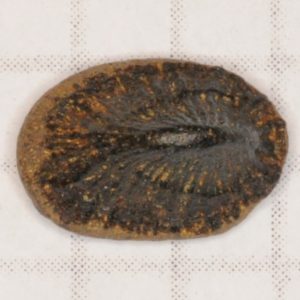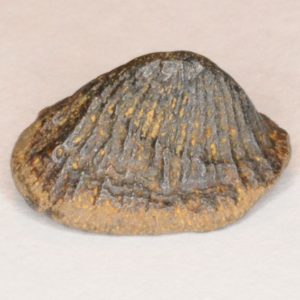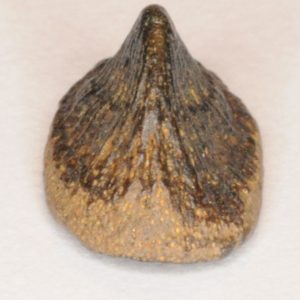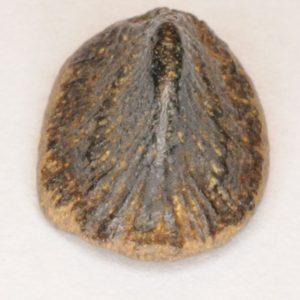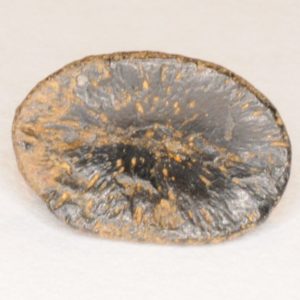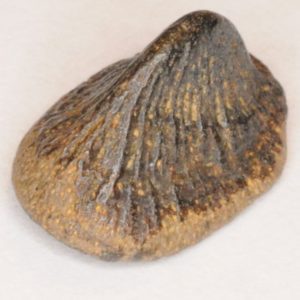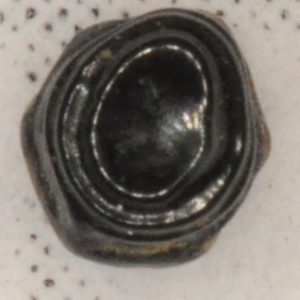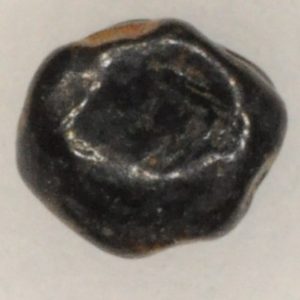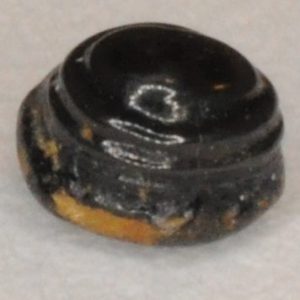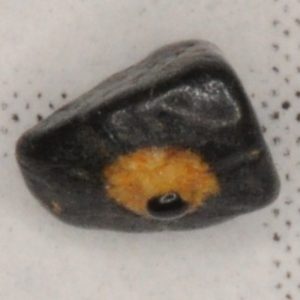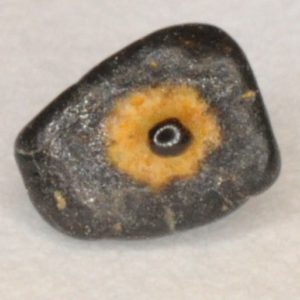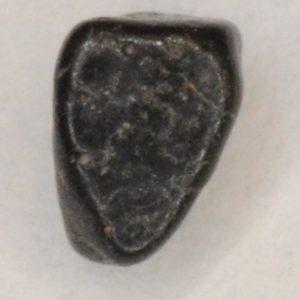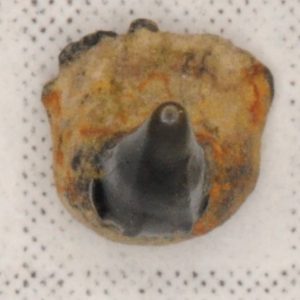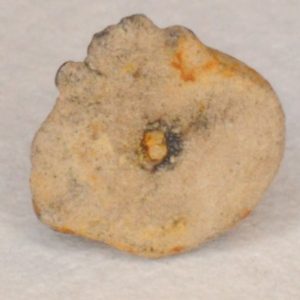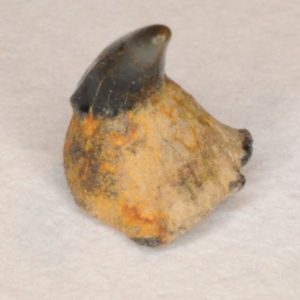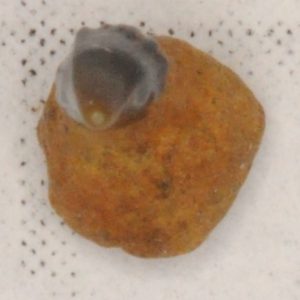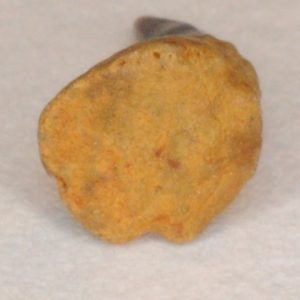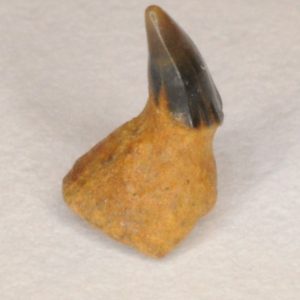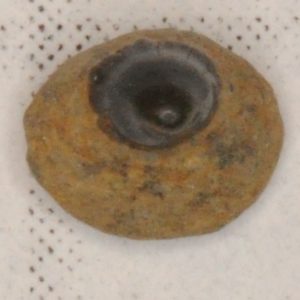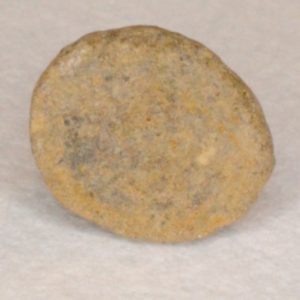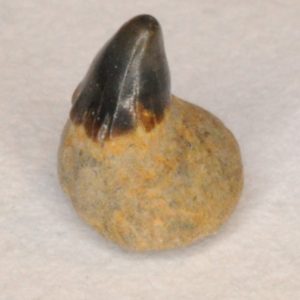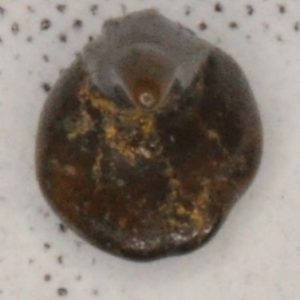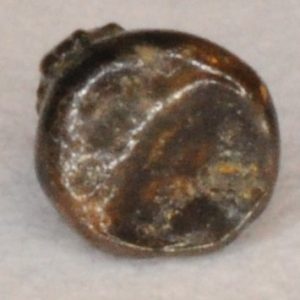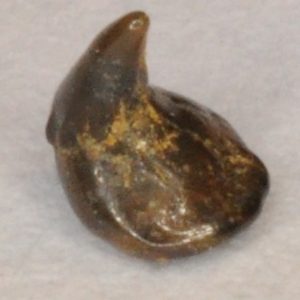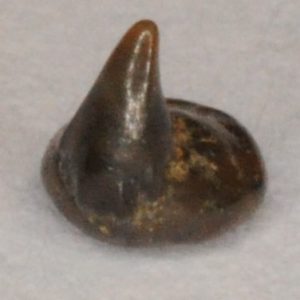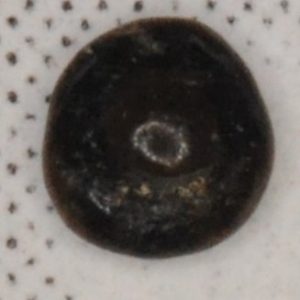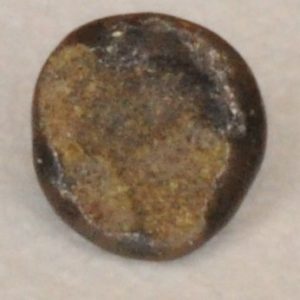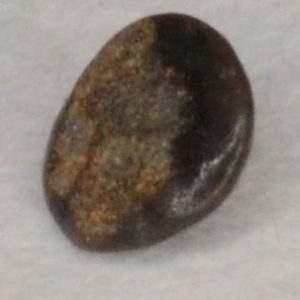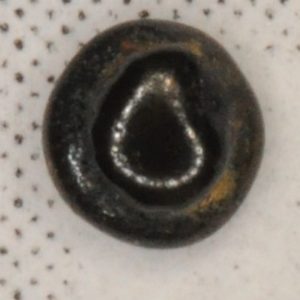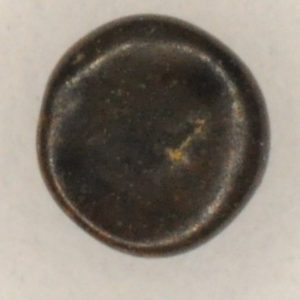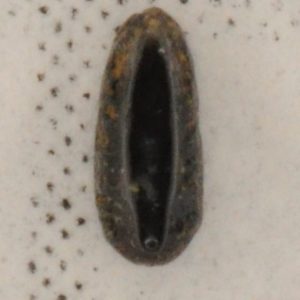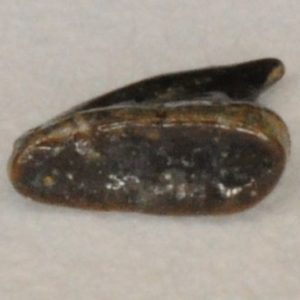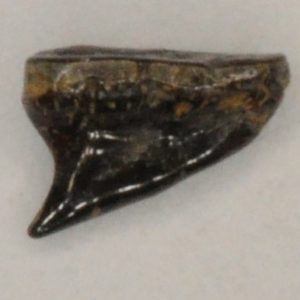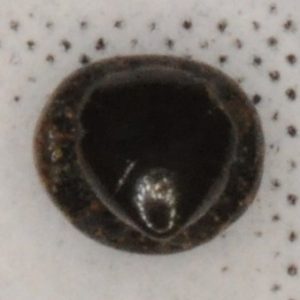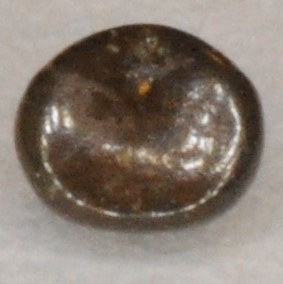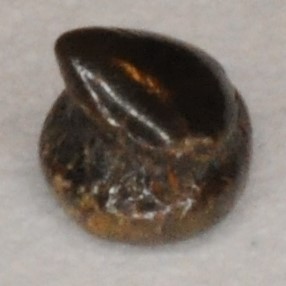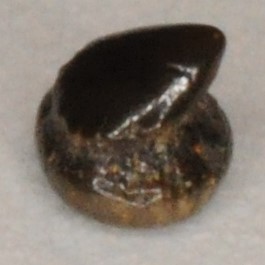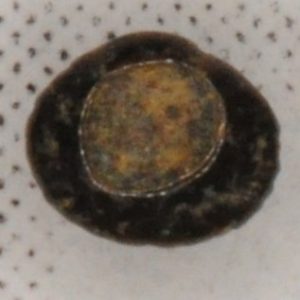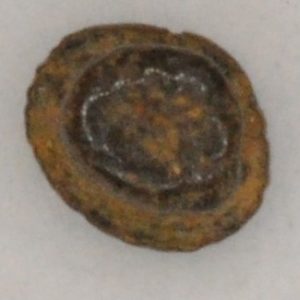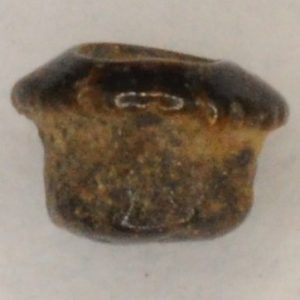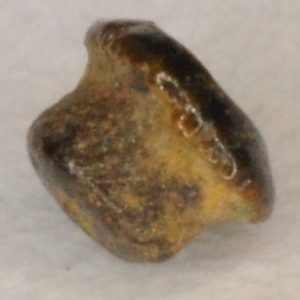NJfossils.com
"Fossils aren't a hobby, they're a lifestyle."Skates and Rays Dermal Denticles
Age – Late Cretaceous; Commonality: Varies from Very Common – Rare; Size – ~1 millimeter – 3/4 inches
Dermal denticles are tooth-like projections that covered the skin of some of these long-gone creatures. These denticles were meant to mainly protect the animal from predators. There are many types that can be found.
Another type of body covering that can be found (mainly from sharks) is placoid scales. These served both as protection from parasties and larger predators and as allowing the shark (or sometimes ray) to swim more efficiently. They are not the same thing as denticles. I have not encountered any placoid scales so far.
Dermal Denticles
This is a rare denticle type that is identifiable as Peyeria sp. It possesses strong striations which run from the apex to the base. They also have much weaker striations running around the circumference. They have a much deeper basal indentation than the “Brachyrhizodus/Rhombodus” dermal denticle type (which has no or very little indentation). Their apex does not “pinch out” of the base (like in the “Brachyrhizodus/Rhombodus” denticle type) but rather blends in with the rest of the denticle. These denticles have been ascribed to the Moroccan sawfish Onchopristis, but no Onchopristis material has been found in New Jersey. There is a small chance that these denticles are from the sawfish Ischyrhiza mira; however, no Peyeria sp. denticles have been found in the Wenonah fm. (where I. mira is common), which means that it is very likely that these denticles are coming from a different creature.
By far the most common type of denticle is the “button type.” Their commonality is “very common.” These denticles are among the smallest ones encountered and are between 1 and 4 millimeters in diameter. They look like cylinders with very small relative heights. The sides of the denticles have ridges which are similar to the ridges on a screw. The height of the denticles can vary, but most are ~1.5 mm tall; some denticles can reach ~3 mm in height. A lot of the denticles are actually teardrop-shaped. These denticles are currently unidentified. They have a fairly generalized form and may belong to more than a single species.
Another relatively common type of denticle is the “blocky type.” Their commonality is “very uncommon.” They are currently unidentifiable because they were not found in association with other material. They have an approximately square base which has the appearance of faint lines (not raised striations) on the surface which resemble the fibers on a piece of wood. The apex of the denticle is a single dot. Almost all of the denticle consists of the root. They usually have a greater width than height. They are anywhere between 3 and 5 millimeters in the greatest dimension.
This is a more specialized type of denticle that is more unique-looking. They are approximately 4-7 millimeters in height. The root is best described as circular and sometimes possesses a single foramen in the middle of the base. The crown of the denticle is heavily enameled and curved. The crown has ridges which start at the crown’s base and sometimes extend almost to the apex. The ridges are located on the convex face and lateral areas of the crown. The height of these denticles consists mostly of the root. The commonality of this denticle type is “very uncommon – scarce.”
Another unidentified type of denticle may resemble the type described above, but is smaller (around 3 mm) and stouter. It has a circular root base and a small flat crown. They are slightly less common than the denticle type described above. These seem to have a couple variations.
Another unidentified denticle type is small – around 4 mm. It is very enameled and comes to a sharp point. Its base blends with the crown. The denticle curves posteriorly. I have only found one of this denticle type so far, but I suspect that they are on the rarer side.
Another denticle type is very curved back and stout. It is possibly an angel shark dermal denticle. It is around 3 mm tall. I have only found one of these so far, but they are probably on the scarcer side. The base is circular and the crown is flat and curved back and has the outline of an isosceles triangle when viewed in occlusal view. I am basing the tentative identification off of a picture of modern angel shark skin from thefossilforum.
Another denticle type has a cylindrical root base and a circular and somewhat flattened crown. The crown on mine seems to have a depression in it, this may be due to post-mortem wear or in vivo wear. This denticle type’s commonality is probably “very uncommon.” They are around 4 mm tall.

